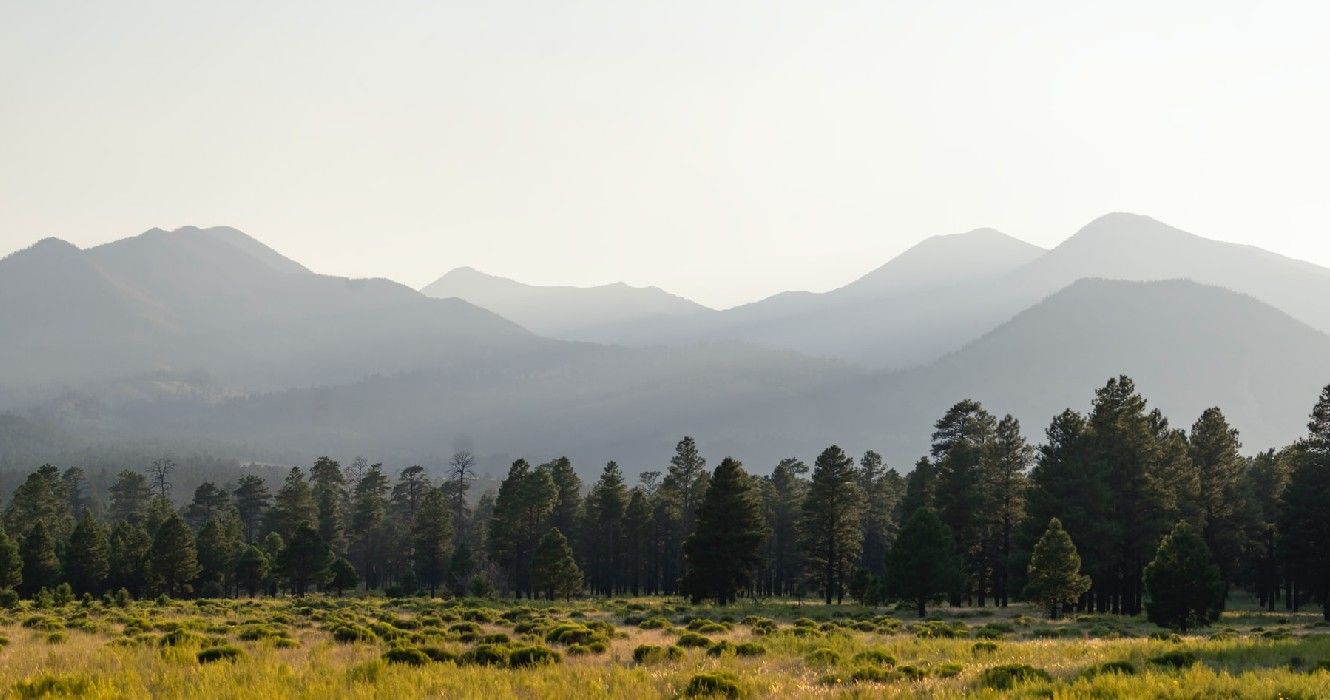Quick Links
Nestled in the north of Arizona, lies one of America's most active volcanic sites. Sunset Crater Volcano was once the site of a powerful eruption that shook its inhabitants and reshaped the face of the region. The story of the earth-shattering event has been solidified in the minds of the local tribes, passing into their mythos. Dormant for almost 1000 years now, Sunset Crater Volcano is an opportunity for visitors to see a natural wonder that is truly legendary.
Arizona has plenty of stunning sites and awe-inspiring views. Lying just a half-hour drive away from Flagstaff, Sunset Crater Volcano is easily accessible and near many other must-sees in the area. From Wupatki National Monument to the Grand Canyon, the region is famous for its striking landscapes. A well-planned path is sure to take visitors through some of the southwest's best wilderness locations.
Sunset Crater Volcano: Rising From The Ashes
The story of Sunset Crater Volcano is one of survival and monumental change. The region was once densely populated by Native American tribes before a massive eruption changed the area forever.
At around the year 1085, the peak caused a series of tremors to rumble through the surrounding villages. The ground split around a 6-mile-long fissure as the sky grew dark with ash.
As the situation grew more dire by the day, the inhabitants were forced to evacuate or face the wrath of the volcano.
When the eruption finally occurred, it sent lava hurtling to heights of 850 feet. The small chunks that broke off would cool and fall to the ground as tiny rocks called cinders. Larger pieces would crash down to the earth; these would later be aptly named 'lava bombs'. The molten rock that oozed from the volcano's top would create the Bonito and Kana'a lava flows.
The event would blanket almost 900 square miles with ash and lava, spreading a jagged quilt across the land. Even today, the Sunset Crater Volcano National Monument is a collage of colorful, notched rocks that trickle down from the peak's inactive, but gaping, mouth.
Sights To See At Sunset Crater Volcano
The craggy, steep landscape of Sunset Crater Volcano is perfect for panoramic views and scenic hikes. The national monument is open from sunrise to sunset year-round and features a variety of fantastic hikes.
- Address: 6082 Sunset Crater Road, Flagstaff, Arizona, 86004
Visitor Center
The national monument's Visitor Center provides information and maps for the park. Interactive exhibits display the volcanic history of the park.
- Location: Take U.S. 89 north from Flagstaff, Arizona for 12 miles (19km). At milepost 430, turn right onto the Sunset Crater–Wupatki Loop Road (FS 545). Continue 2 miles (3km) to the visitor center.
- Hours: Friday - Tuesday, 9 am - 4:30 pm
- Amenities: Restrooms, park store, and picnic tables
Lava Flow Trail
Extending along the base of the volcano, the Lava Flow Trail brings hikers close to the site of the eruption. The route winds around the Bonito Lava Flow and numerous other volcanic remnants.
Traveling in the spring or summer allows visitors to see the refuge's meadows blooming with wildflowers. It is accessible for wheelchairs, walkers, and strollers. Pets are allowed on its paved portion
- Distance: 1 mile (1.6 km) loop
- Estimated Time: 1 hour
- Difficulty: Easy
Bonito Vista Trail
The Bonito Vista Trail crosses over a field of cinders. Hikers are treated to panoramic views of the Bonito Lava Flow and its surrounding volcanic features.
- Distance: 0.3 miles (0.5 km) loop
- Estimated Time: 20 minutes
- Difficulty: Easy
A'a Trail
The jagged, basaltic remnants of Sunset Crater Volcano's eruption can easily be seen from the A'a Trail. This pathway takes visitors around some of the monument's most jagged and unique rock formations.
- Distance: 0.25 miles (0.3 km)
- Estimated Time: 15 minutes
- Difficulty: Easy
How To Get To Sunset Crater Volcano
The most popular route to Sunset Crater Volcano National Monument is a loop along Highway 89.
Visitors can begin at Flagstaff, Arizona (a city famous for its eclectic bar scene) and travel north on US Highway 89 to reach the Ponderosa Pine forests of Sunset Crater Volcano. Descending almost 2,000 feet in elevation, the road continues through the picturesque Wupatki National Monument.
Renowned for its ancient Puebloan ruins and fiery desert vistas, Wupatki is a beautiful and interesting site.
- Distance: 35 miles
An extended road trip will allow thrill-seekers to see the region's most spectacular scenery. Continuing on Highway 89 North and then exiting on SR-64 West will bring visitors close to one of the USA's best views.
The Grand Canyon's southern rim lies just over 90 miles from Sunset Crater Volcano, allowing it to be easily incorporated along a longer loop back to Flagstaff.
The Flagstaff Lava Tubes are another popular destination for thrill-seekers along this expanded route. Visitors can access them as they circle back around to Flagstaff along Highway 64 and 180, hitting Grand Canyon Junction along the way.
- Distance: 207 miles
Cost
The cost of admission covers entry to Sunset Crater National Monument as well as Wupatki National Monument.
- Private Vehicle: $25
- Commercial Sedan: $28
- Commercial Van: $40
- Commercial Bus: $100
- Bicyclist/Pedestrian: $15
- Motorcycle: $20
What To Bring
- Up-to-date maps
- Sunscreen
- Food and drinks
- A camera
- Road trip essentials
- Grand Canyon essentials

